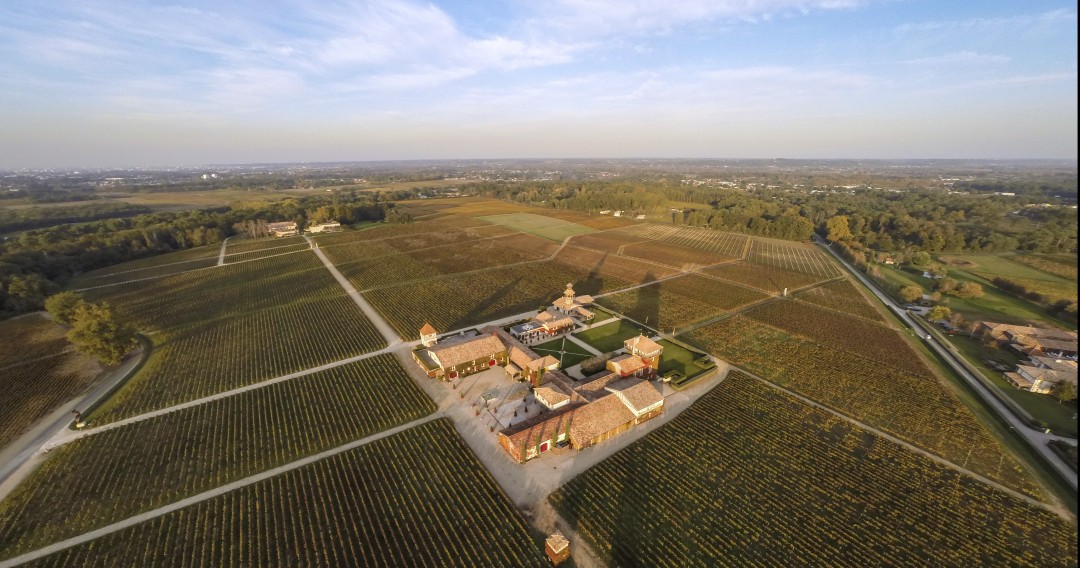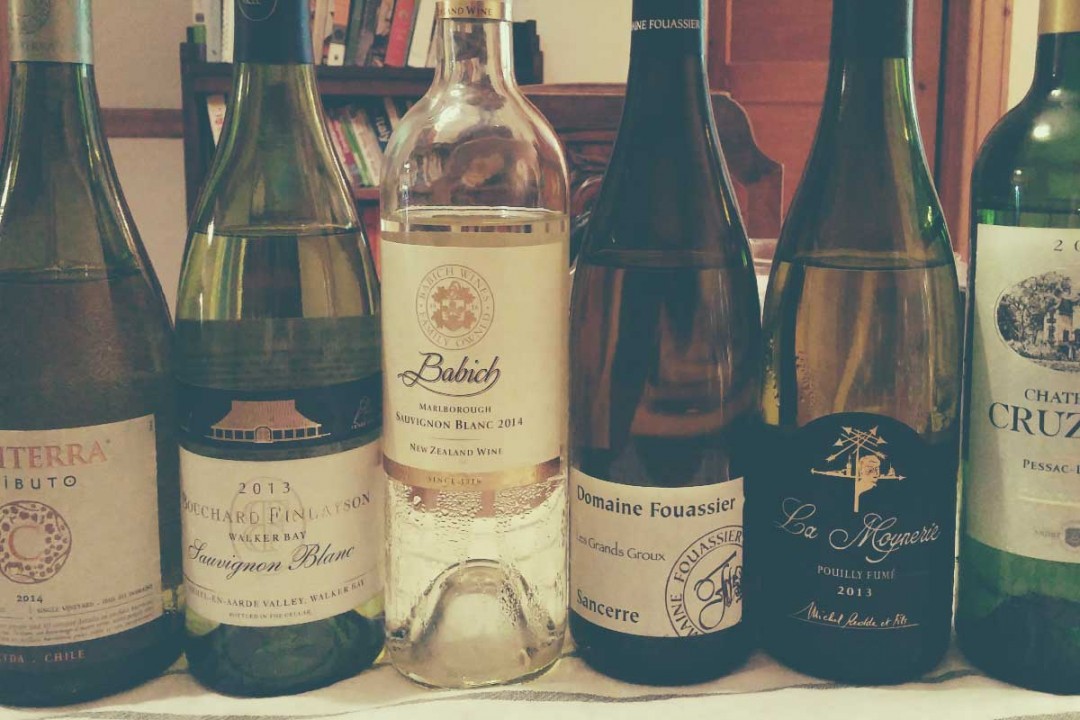When I was a kid, my dad used to buy Bordeaux futures and pull them out with much pomp and circumstance on special occasions. These bottles marked my vinous awakening. An evening of 1982 Cos d’Estournel and Léoville Las Cases was one of those seminal wine tasting moments for me; like the scene in “Amadeus” when Salieri describes hearing Mozart’s music for the first time.
Unfortunately, I don’t get as many opportunities to drink top class Bordeaux these days, so when a tasting like the Union des Grands Crus de Bordeaux rolls through town, I am a happy gal. 70 of the most prestigious Bordeaux estates under one roof, pouring their 2012 vintage…definitely an event worth the trouble of wearing heels on an icy January afternoon.
…definitely an event worth the trouble of wearing heels on an icy January afternoon.
2012 was not an easy vintage in Bordeaux. It was late ripening vintage, with a hot spell mid-summer. Merlot dominant blends fared well, but ill timed rain early October wreaked havoc on the Cabernet Sauvignon harvest. Jancis Robinson described the vintage as “timorous” and Robert Parker’s vintage charts give all but Pomerol good, but not great scores in the high 80s. The SAQ invitation however hyped the vintage as fabulous though…so I thought I should check it out for myself. After all, the growers of the Union des Grands Crus never really have terrible vintages. They harvest in several passes, and carefully sort, ensuring only the ripest, healthiest grapes make the cut for the “grand vin”.
The tasting area was organized as a walk-around tasting leading tasters from Graves, to Saint Emilion and Pomérol, and then back to the left bank for the Médoc and its famed crus. There was a good sized crowd of happy faces, sipping and nodding earnestly while the wineries spun their lustrous tales. I started with the whites. Péssac-Leognan, a top quality enclave within the Graves region, is reputed for its dry Sauvignon Blanc-Sémillon blends. Imagine the tangy acidity, and fragrant citrus, gooseberry aromas of Sauvignon Blanc, but with more weight, a creamy, layered texture and a smooth, oak-kissed finish. This is top Bordeaux blanc…summed up briefly. The 2012 did not disappoint. Château Smith Haut Lafitte was particularly stunning with enticing white floral aromas, vibrant acidity, a velvetty core and lingering, flavourful finish.
The left bank reds were surprisingly approachable for such a recent release. The mid-summer warmth of the vintage is apparent in the bright, fruity aromatics and general lack of pyrazine (bell pepper) notes. The majority showed fresh, balanced acidity, smoothness, rounded tannins and well-integrated oak. Each appellation was true to form, with the Graves a little lighter and more delicate and the Margaux perfumed and silky. The power and depth of the best vintages is lacking in most, but for an early drinking option, 2012 seems to have a lot of charm. Château Gruaud-Larose was one of my top picks for its intoxicating cassis and exotic spiced nose and dense, brooding core. Château Phélan Ségur, Château Pichon-Longueville Baron, Château Léoville Barton and Château Brane-Cantenac were also heavy hitters.
The majority showed fresh, balanced acidity, smoothness, rounded tannins and well-integrated oak.
The right bank wines showed nicely; very smooth and polished. The Saint Emilion were a little more restrained, with attractive cassis and floral notes. The Pomérols really jumped out the glass though; brimming over with plum, red and black fruits, and spicy oak. The 2012 vintage offers the hedonistic pleasure of smooth, fruit-driven young wines and the tannin structure to age gracefully for 10 years or more. Château Canon, Château Le Bon Pasteur and Château Clinet showed very nicely.
Sauternes was the only minor dip in the tasting. Sémillon is low in acidity at the best of times and with residual sugar regularly over 100g/L, Sauternes can easily become a little cloying. The range of aromatics on display was phenomenol. Château La Tour Blanche was redolent with tropical fruit, marmelade, honey and spiced notes. However, the acidity faded too quickly on the palate, leaving the finish mouth-coatingly sweet.
Detailled tastings notes for my favourite wines:
Château Smith Haut Lafitte AOC Pessac-Léognan white 2012 – 94pts. LW
Smith Haut Lafitte is a leader in sustainable development for the Bordeaux region. This ultra-stylish white, from 50 year old vines, shows enticing white floral and grapefruit aromas, vibrant acidity, a creamy, velvetty core and lingering, flavourful finish.
Blend: 90% Sauvignon Blanc, % Sauvignon Gris, 5% Sémillon
Château Canon AOC Saint Emilion 2012 – 93pts LW
Situated in pride of place atop the famed limestone summit, Château Canon produces particularly elegant Saint Emilion. Highly complex aromas of plum, floral notes, blackberry and herbal undertones follow through on the palate. Fresh acidity, dense, juicy mid-palate and firm, polished tannins. The finish is long and layered, with hints of cedar.
Blend: 70% Merlot, 30% Cabernet Franc
Château Le Bon Pasteur AOC Pomerol 2012 – 92pts LW
Fermented and aged in 100% new oak, this is a potent Pomerol with an intense raspberry, cherry, plum and spicy oak fragrance. Fresh and full body, with a smooth, rounded mouthfeel, firm, chewy tannins and a persistent, creamy finish.
Blend: 85% Merlot, 15% Cabernet Franc
Château Clinet AOC Pomerol 2012 – 93pts. LW
From the highest elevation of the famed Pomerol plateau, Château Clinet combines power and finesse. Attractive plum, cedar and black cherry on the nose, with a juicy, full bodied palate. Firm, grippy tannins provide a solid framework. The finish is fresh and long.
Blend: ~85% Merlot, ~10% Cabernet Sauvignon, ~5% Cabernet Franc
Château Brane-Cantenac AOC Margaux 2012 – 94pts. LW
An opulent style of Margaux, with heady floral aromas, underscored by ripe black currant and black cherries. The full-bodied palate shows lovely balance and poise; with vibrant fruit providing lift through the mid-palate. Aged 18 months in 70% new French barriques, the oak provides structure and a creamy texture without overpowering the fruit. The medium weight, polished tannins frame the long finish nicely.
Blend: 55% Cabernet Sauvignon, 35% Merlot, 10% Petit Verdot
Château Gruaud Larose AOC Saint-Julien 2012 – 96pts. LW
“The King of wines; the wine of Kings” is the motto of this renowned estate, dating back to 1725. This was definitely my feeling when tasting the elegant, highly complex 2012. Fragrant aromas of exotic spice, black and red currants, cedar and violets spring from the glass, gaining in intensity upon aeration. Powerful and brooding, with dense, concentrated layers of rich berry fruit and spice. and ripe, fine grained tannins. Lovely, fresh flavours linger on the beautifully persistent finish.
Blend: 61% Cabernet Sauvignon, 29% Merlot, 7% Cabernet Franc, 3% Petit Verdot
Château Léoville-Barton AOC Saint-Julien 2012 – 94pts. LW
Heady and stylish, with attractive aromas of mint, saffron, black fruits and floral undertones. Bright acidity leads into a full-bodied, dense core, with lots of juicy, black berry fruit and firm, fine grained tannins. The minty notes return on the finish, mingling with the cedar oak on the long, vibrant finish. The high percentage of Cabernet Sauvignon makes this a bolder, more structured style of Saint-Julien.
Blend: 74% Cabernet Sauvignon, 23% Merlot, 3% Cabernet Franc
Château Pichon-Longueville Baron AOC Pauillac 2012 – 92pts. LW
Only 40 of the 73 hectares that make up the Pichon-Longueville Baron estate are deemed fit for the “grand vin”. A further strict selection is carried out during blending, ensuring that only the finest quality barrels make up this cuvée. The 2012 offers classic Pauillac aromas of cassis, cedar and graphite, with a touch of bell pepper. Very firm and powerful, with big, grippy tannins and a medium length cedar-scented finish.
Blend: 62% Cabernet Sauvignon, 33% Merlot, 3% Cabernet Franc, 2% Petit Verdot
Château Phélan Ségur AOC Saint-Estèphe 2012 – 95pts. LW
Phélan Ségur, with its fleshy Merlot character and enticing mineral notes, is always an attractive example of Saint-Estèphe. The 2012 doesn’t disappoint. The nose is sweet and perfumed, brimming with red and black fruit, violets and earthy minerality. Very harmonious and smooth on the palate; the full body is off-set by bright acidity, a concetrated, fruit-driven core and firm, chewy tannins.
Blend: 55% Cabernet Sauvignon, 45% Merlot
Château La Tour Blanche AOC Sauternes 2012 – 91pts. LW
Glorious exotic notes of mango, pineapple and passion fruit overlay botrytised notes of honey and marmelade. Lively acidity on attack, that falls just a touch flat on the finish. High viscosity, lots of juicy, exotic fruit and subtle, vanilla notes on the medium length finish.
Blend: 83% Sémillon, 12% Sauvignon Blanc, 5% Muscadelle


